Post Earthquake Assessment
of Vaulted Structures at Bam, Iran


On 26th December 2003, an earthquake struck Bam area at 5:28 AM, local time, lasting 12 seconds for the major tremors and up to 25 seconds for the minor ones. According to various seismologic sources, it was evaluated between 6.3 and 6.6 on Richter’s scale. It left, according to local sources, about 38,000 dead and about 70 % of the city of Bam destroyed.
This mission was requested to CRATerre, The International Centre for earth construction, within the framework of a multinational agreement of partnership with the French Ministry of Culture and Communication (Direction of Architecture and Heritage) for the French Embassy in Iran and the Iranian Cultural Heritage Organisation (ICHO). Satprem, as a member of CRATerre, and expert in earthen vaulted structures conducted this assessment in May 2004.
The objectives of the mission were the following:
• Assessment of the damages caused by the earthquake to the vaulted structures of the historic citadel, Arg-e-Bam, of Bam and its surrounding area.
• Analyse the typologies of vaulted structures and the effect of the earthquake on them.
• Analyse their pathologies and understand the causes of such behaviour.
ARG-E-BAM BEFORE RESTORATION
Arg-e-Bam was totally abandoned since 1932 and may be, even before for the city. Therefore without any care and even with the little annual rainfall, weathering already severely deteriorated the earth buildings before the earthquake. Therefore before restoration works, what were left were ruins and especially enormous damages for the vaulted roofs.
Weathering shows below its effects on a city abandoned since several decades. Very little remains from the roofs and the walls are extremely eroded. This was the state of nearly the entire city before restoration.


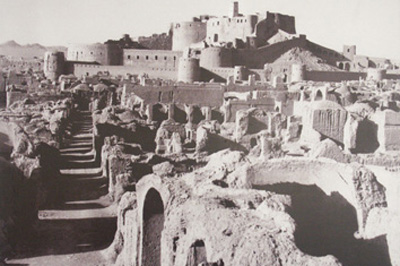



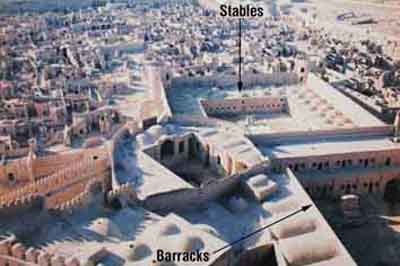
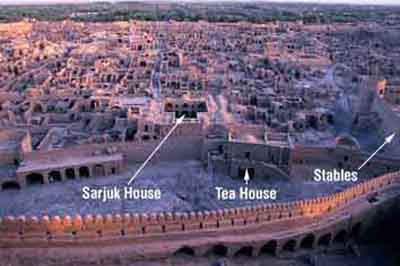

ARG-E-BAM BEFORE THE EARTHQUAKE
During the last few decades, the restoration work attempted to respect the existing structures, which is the basis of restoration ethics. Attention was mostly paid on returning these buildings to their former aspect. Exceptional work was conducted on several buildings, and the results were quite impressive. The main problem of the restoration work was that they had not the foresight to strengthen the old structures. No bond had been made between the damaged structures and the repairs.

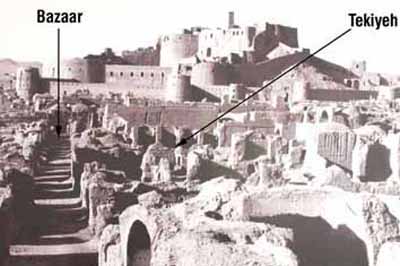
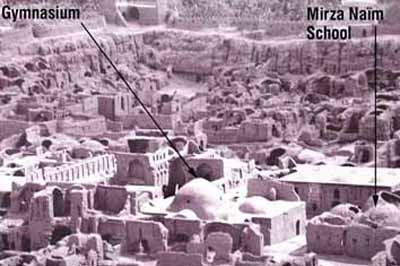


ARG-E-BAM AND THE CITY OF BAM AFTER THE EARTHQUAKE

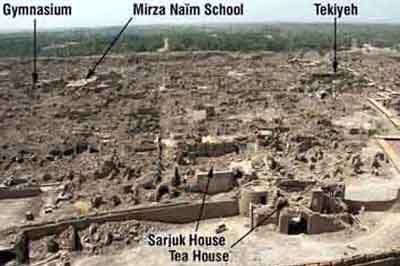



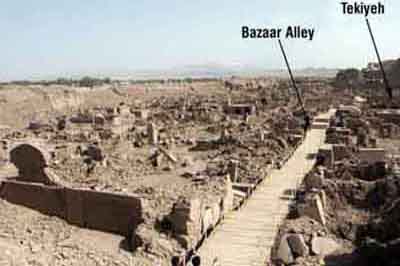





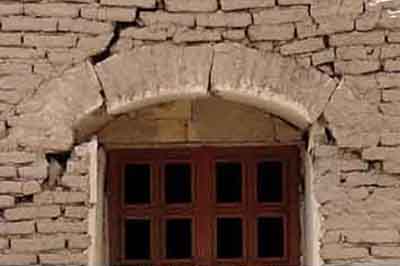

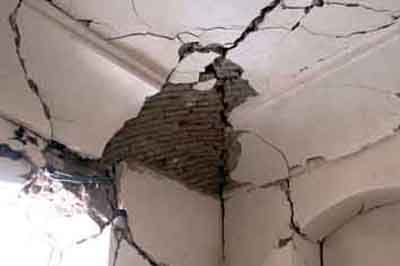


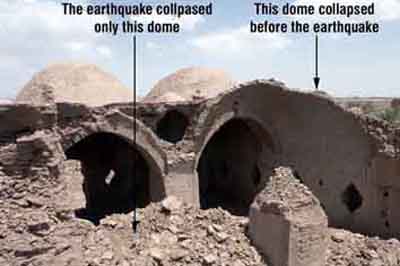

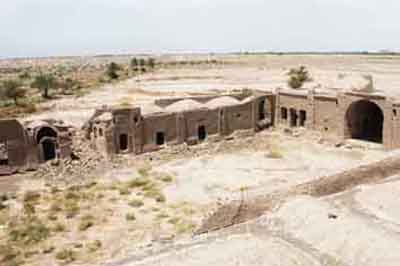




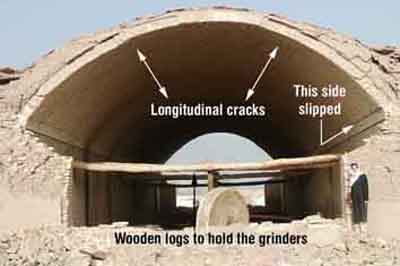



STABILITY ANALYSIS OF THE VAULTED STRUCTURES
A general remark can be done for nearly all vaults and domes in Arg-e-Bam and Bam area: The system vaulted structure/wall is at the limit of stability under static conditions most of the times. The condition of stability is that the line of thrust (LT) should remain in the middle third of the entire masonry.
This is rarely the case for the structures which were still standing. Often LT goes outside the inner third:
• In the vault: LT goes sometimes inside the intrados side and/or outside the extrados side of the middle third. This creates tension stresses in the vault.
• In the wall: LT goes in the outer third or even out of the wall. Therefore the wall presents a lot of stresses with a bending moment and shears which tend to tilt and split it.
Therefore, already under static condition, the wall is subject to tilt and to shear. Thus, the earthquake emphasizes this stress tremendously and has no mercy on the structure vault/wall which is at its limit of stability.
The vault 1 in Bam, on the right side, was part of a series of vaults and the one on the right side collapsed as well as the front wall. Thus the vault pushed away the side wall on the front part. The back wall got just a shear crack.
The funicular study drawn for the vault 1 in Bam is for the first vault of the series. It takes in account only the cross section of the system, and it shows that it is not stable as LT goes out around mid height of the wall. In fact, this system vault/wall should not be analysed only in cross section but also in plan.
The structure could stand in normal conditions because it is a box system type as the room has a quadrangular plan (± 2.4 x 3m): the walls at both ends act as stiffeners. As long as the corners are sound, the end walls can withstand the tensions created by the thrust.








The analysis for the vault 1 of Arg-E-bam, on the right side, follows the same principle as for the vault 1 in Bam:
It takes in account only the cross section of the system, and it shows that it is not stable as LT goes out around mid height of the wall. In fact, this system vault/wall should not be analysed only in cross section but also in plan.
The difference is that this structure did not originally have a front wall and therefore the box system was not really acting to reinforce the structure. This vault behaved extraordinarily well under the stress of the earthquake and it challenges the rules of stability, even under normal conditions.
- Address:Auroville Earth Institute, Auroshilpam, Auroville 605 101 - T.N. India
- Phone:+91 (0) 413 - 262 3330 / 262 3064
- Email:info@earth-auroville.comOpens in your application

